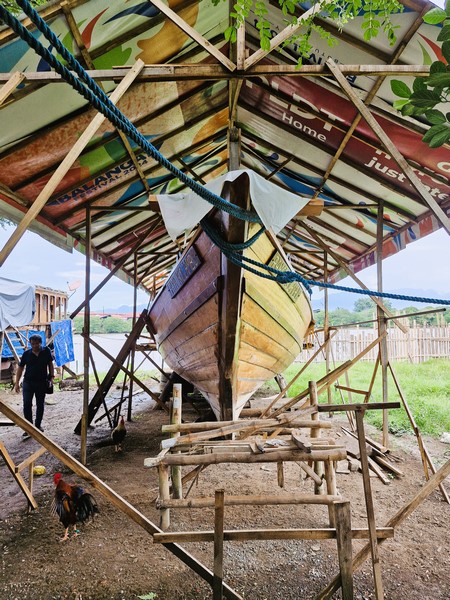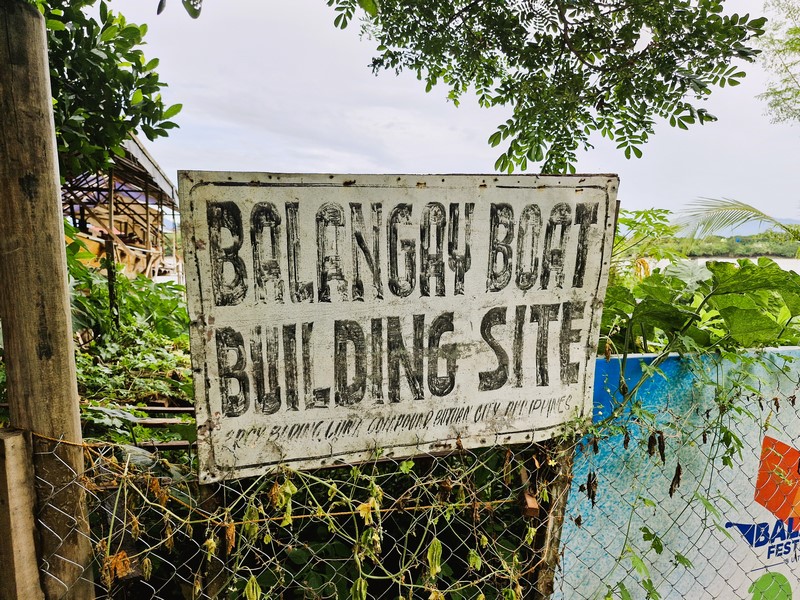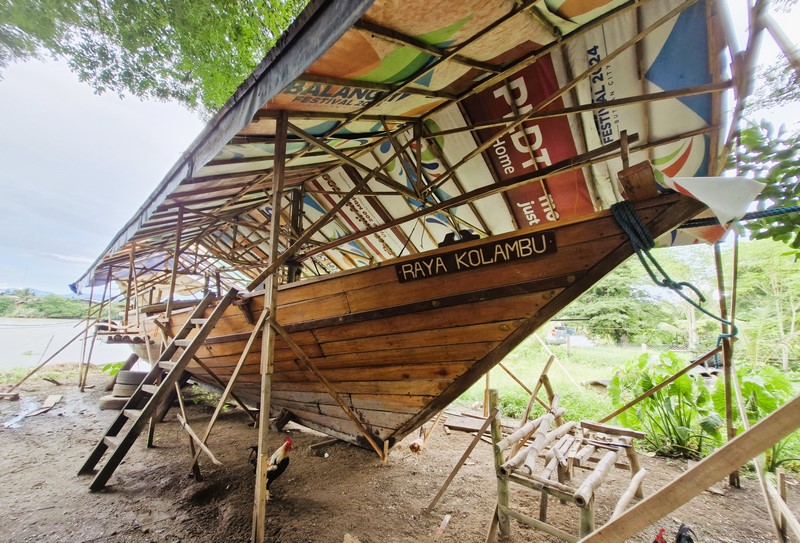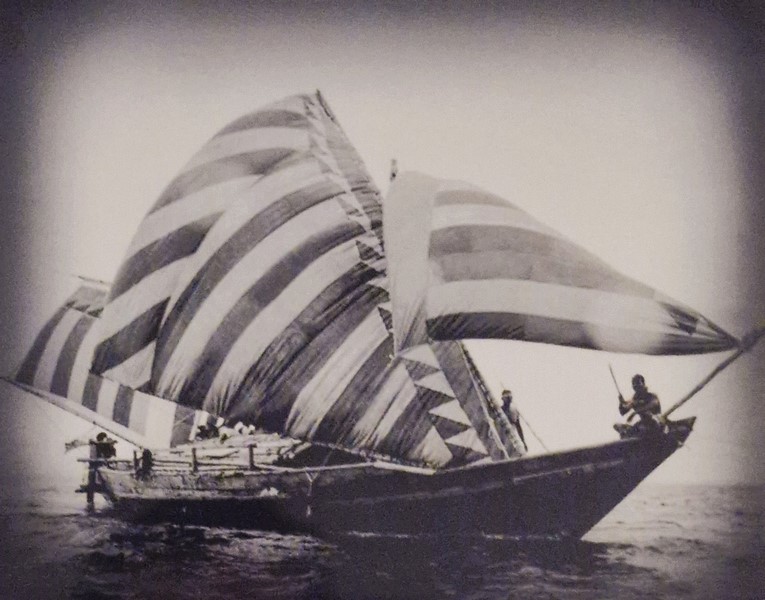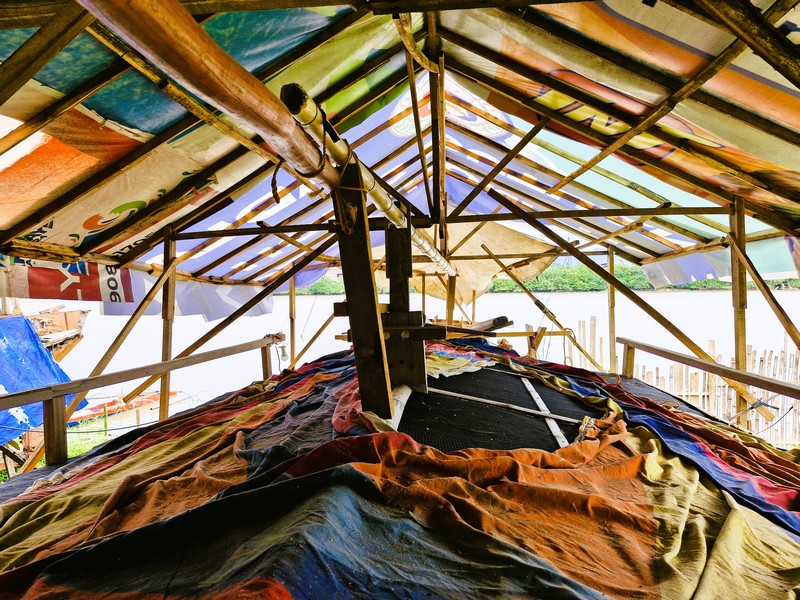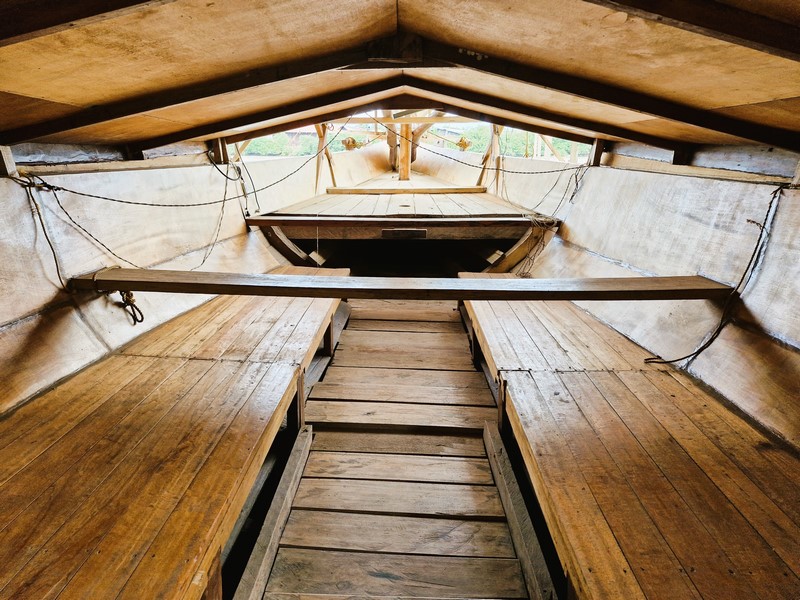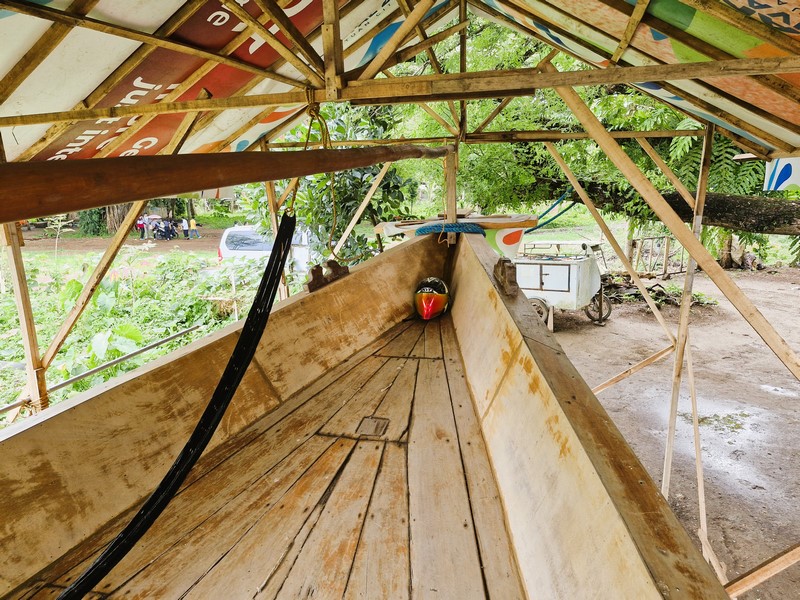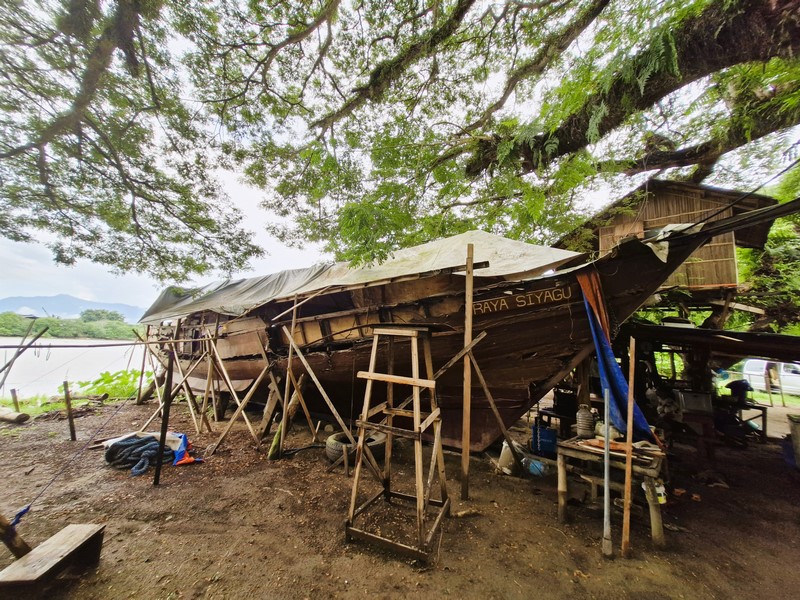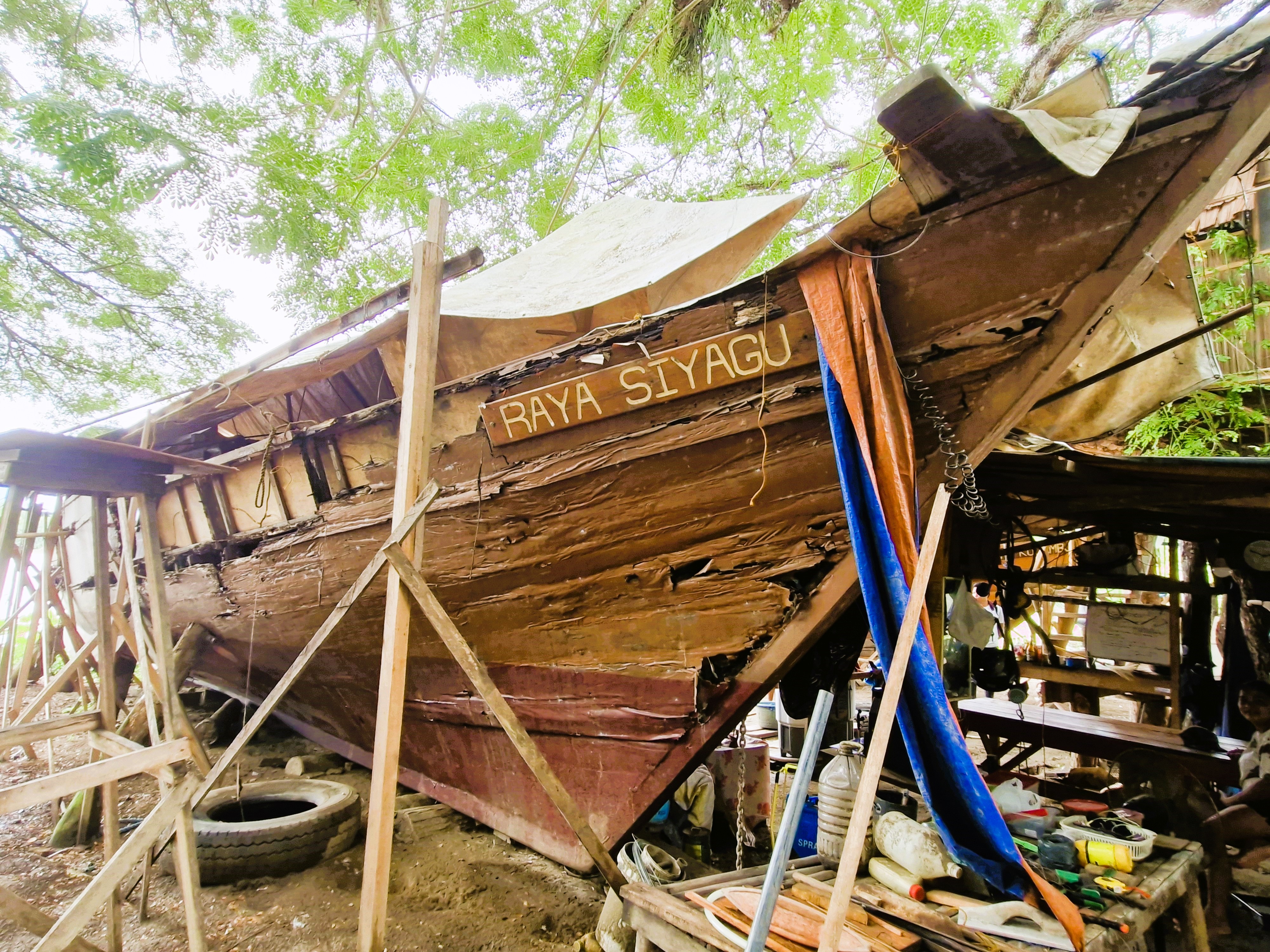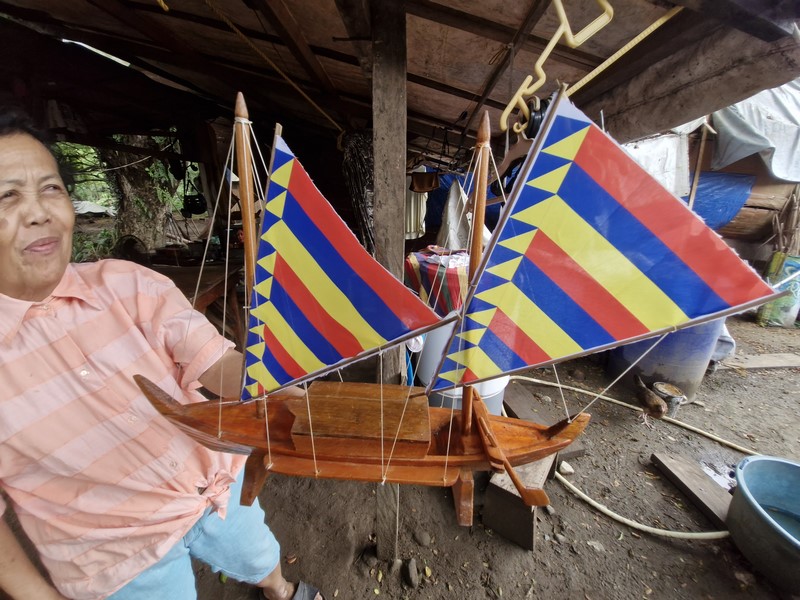Part of Almont Inland Resort-sponsored Tour
After our short ocular visit to Magsaysay Bridge, we next drove to the 10.6-acre Balangay Boat Building Area Tree Park, along the Agusan River, where the quincentennial balanghais, Raya Siyagu (with 10 gross tonnage), named after the ruler of Butuan-Caraga, and Raya Kolambu (with 8 gross tonnage), named after the former’s sibling, who was the ruler of Mazaua, are drydocked. The former was in urgent need for repair while latter still looked seaworthy.
The story of the balanghai (also called balangay) replicas begins in 2009 when the Kaya ng Pinoy Inc., the team (headed by Arturo “Art” Valdez, former undersecretary of the DENR and DTI) that conquered Mount Everest in 2006, announced plans to reconstruct a balanghai boat, with the help of the Sama-Bajau (Sama Dilaya) and other tribal members, from Sibutu and Sitangkai Islands of Tawi-Tawi, who retained the lashed-lug boat-building techniques which were mostly lost in other islands.
Three balanghais, namely the Diwata ng Lahi, Masawa Hong Butuan, and the 75 ft. long, 15 ft. wide and 9 ft. high Sama Tawi-Tawi (launched 16, 2010) were constructed, with old doongan (Heriteriera littoralis) and other Philippine hardwoods (all donated by former Sulu governor Abdusakur Mahail Tan), by the team of Arturo Valdez at Manila Bay, at a 1,000 sq. m. site at Liwasang Ullalim at the Cultural Center of the Philippines Complex. The special wood for construction came from the established traditional source in southern Philippines, specifically Tawi-Tawi. The team have pinpointed Sama-Bajau master boat builders, whose predecessors actually built such boats, and used traditional tools during the construction.
The boats will try to retrace the 1417 voyage of Sultan Paduka Batara (with 340 followers) of Sulu, from the Philippines to Fujian province in China (to pay tribute to the third Ming Dynasty Chinese emperor Zhu Di (or Yongle). In September 1417, he arrived in Quanzhou but died there, from natural causes, and is buried in in Dezhou, Shandong, 320 kms. south of Beijing. Kamulin, the sultan’s wife, and two sons (Andulu and Wenhalla) remained in China to tend to his tomb. The emperor granted them lands and resources. About 3,000 to 6,000 of their descendants still live there.
On September 1, 2009, all three journeyed, from Manila Bay, to the southern tip of Sulu, tracing the routes of Filipino ancestors during the waves of Austronesian settlement through Maritime Southeast Asia and the Pacific. On May 1, 2010, after an 8-month cruise, they arrived in Zamboanga City, after 70 multiport stopovers, covering 2,500 kms. The balanghais were navigated via the old method used by the ancient mariners – steering by the Sun, the stars, the wind, cloud formations, wave patterns and bird migrations. Covering a distance of 3,908 kms. (2,108 nautical mi.), along the way, they stopped off at numerous Philippine cities to promote the project.
The second leg of the voyage, from 2010 to 2011, saw them navigate around South East Asia – Brunei, Indonesia, Malaysia, Singapore, Cambodia, Thailand and up to the territorial waters of Vietnam, before heading back to the Philippines.
In April 2017, two more balanghai replicas, namely the Lahi ng Maharlika and Sultan sin Sulu were assembled, without any blueprints, in Maimbung, Sulu, by 7 members of the Sama-Bajau (Sama Dilaya), from Tawi-Tawi, led by master boat builder Nur Usman. On May 10, 2017, both began sailing, from Sulu, in a mission to relive the 600 years of diplomatic connection between Sulu and ancient China. They navigated without the use of modern instruments, and only through the skills and traditional methods of the Filipino Sama people.
On April 28, 2018, the 33-man Philippine Balangay Expedition (headed by Valdez), on board the Sama Tawi-Tawi (the lead boat skippered by John Manginsay), Lahi ng Maharlika and Sultan sin Sulu, sailed from the Manila Yacht Club and finally reached China, arriving in Xiamen at 3 PM, May 2. The first two boats had small engines, allowing it to move at 30 knots, while the third was propelled by sail only, with a maximum speed of 10 knots. They returned to Manila on May 22, after a 25-day journey.
In 2019, the Lahi ng Maharlika (now renamed Raya Kolambu), manned by 10 personnel, and Sultan sin Sulu (now renamed Raya Siyagu), run by 8 personnel, set sail, from San Vicente, Palawan to Butuan, in a 6-day journey crossing the Sulu Sea, making stops in Palawan (Linapacan, Cuyo), Antique (Anini-y), Negros Occidental (Sipalay), Negros Oriental (Dumaguete City), Camiguin and, finally, to Butuan Bay. From Butuan, the balanghais entered the Mactan-Cebu waters on the morning of December 14, arriving in Lapu-Lapu City to commemorate the quincentennial (500th) anniversary of the Battle of Mactan on April 27, 2021.
Today, the 15 m. long Diwata ng Lahi is on permanent public display at the back of the National Museum of Fine Arts while the Masawa Hong Butuan is on a special pavilion in Butuan City.
Balangay Boat Building Site: Butuan Global Forum, Inc., Luna Compound, 861 R. Calo St., Brgy. Bading, Butuan City, Agusan del Norte.
How to Get There: Cebu Pacific Air has 20 daily flights from Manila to Butuan City. From the city center, take a habal-habal (motorcycle) ride to the site.
Almont Inland Resort: J. C. Aquino Ave. (formerly Zamora St.), Brgy. Imadejas, 8600 Butuan City. Tel: (085) 300-0296. Mobile number: +63977 674 3412. Email: fo.inlandresort@almont.com.ph. Website: www.almont.com.ph/almontinlandresort.

